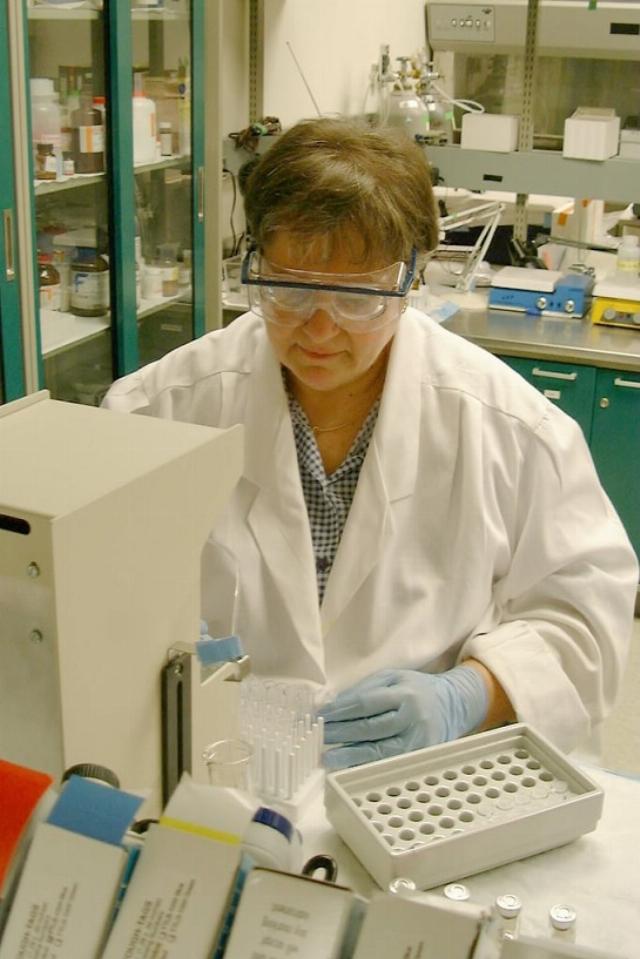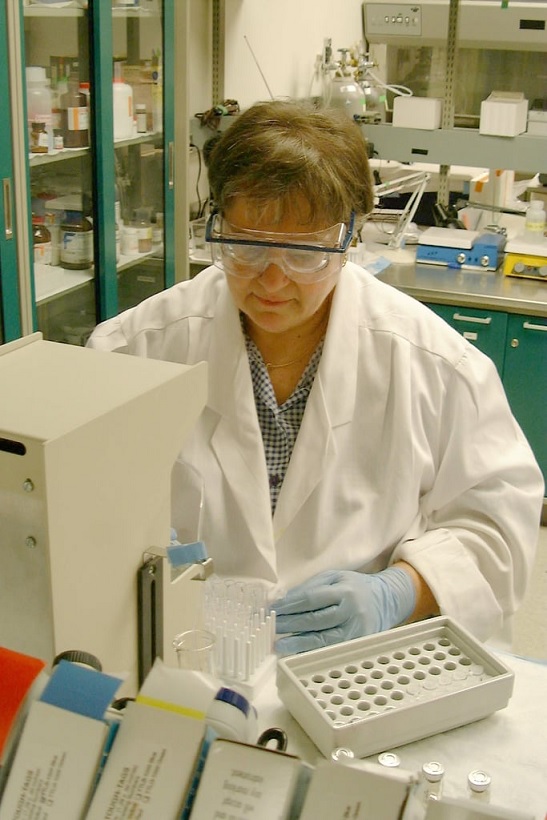

National Health and Environmental Effects Research Laboratory
So many problems affect U.S. overdose death statistics that it's not possible to even hypothesize a way to clean up the data.If we’ve learned anything from our national COVID experience, it’s that science is not a collection of fixed, eternal declarations. Tools and terminology useful in the process of discovery can also be instruments of confirmation. A microscope can be a portal to the unexpected, or a prop in a theatrical performance.
True crime documentaries and news reports of deaths often feature a statement such as, “toxicology was performed,” “toxicology is pending,” or “toxicology showed X, Y and Z.” The word, “toxicology,” has an aura of a thorough, definitive procedure.
Typically, “toxicology” is understood as analogous to drug screening the living, but methods and reliability are very different. Usually screening for the living is something like a 10-panel test of a fresh sample of urine, plasma, or serum (occasionally hair), with results for limited categories (positive for opioid could mean morphine, oxycodone, or codeine, other medications, or recently-consumed poppyseed cake). Cross-positive results can be caused by unrelated consumption, such as quinine in tonic water (false positive for opiates), ephedrine, fluoxetine, metformin, and pseudoephedrine (false positive for methamphetamine,) and the proton pump inhibitor pantoprazole (positive for marijuana).
Because of the multitude of conditions and processes particularly affecting human remains, post-mortem testing is vulnerable to widely varied confounding artifacts and processes. Decomposition and/or bacterial action can alter the location or concentration of drugs or metabolites, a process called postmortem redistribution. In addition, physical and chemical changes within the body, or subsequent contamination, can create or destroy chemicals. Burial can affect results.
Factors affecting results are not only numerous, but often impossible to discover in retrospect. Who could determine temperature changes in a room in the hours or days before a body was discovered?
For post-mortem drug testing, whole blood collected from the femoral artery is preferred as somewhat shielded from ongoing changes. If unavailable, other options — all more vulnerable to confounding factors — include blood from the heart, tissue from solid organs, fluids from other areas of the body (e.g, eye or stomach). Some professionals recommend sampling multiple locations to potentially piece together better data.
Not only is there no standard set of tests, there aren’t standardized protocols for performing tests or collecting samples. The National Association of Medical Examiners publishes a list of recommended standards, but following them isn’t mandatory. Forensic procedures vary widely by location (there are over 2000 death investigation offices in the U.S.).
Regarding post-mortem drug testing, one professional stated, “There is no reliable or obvious connection between concentrations measured in life and subsequent to death. Consequently, concentrations measured after death cannot generally be interpreted to yield concentrations present before death. The definition of lethal concentrations is extremely difficult.”
Even if post-mortem results could reliably indicate concentrations prior to death, it wouldn’t prove the drugs caused the death. Individual sensitivity to medications varies. Anaphylaxis can follow previous unremarkable exposure. Combining medications can increase or decrease absorption, or produce a toxic interaction. Because metabolizing opioids varies widely, and tolerance increases with use, some people are unharmed by a dose that would suppress respiration in others. Prescribed morphine could be detected in a patient who died of cancer or a pain patient who was a passenger in a fatal car crash.
<img alt captext="National Health and Environmental Effects Research Laboratory” class=”post-image-right” src=”https://conservativenewsbriefing.com/wp-content/uploads/2024/07/why-reliable-opioid-death-data-is-impossible.jpg” width=”400″>One paper I read discussed eight deaths attributed to drugs. Potential candidates for the study were excluded if there was missing medical and/or social history, or advanced decomposition. All the subjects studied had positive post-mortem drug assays — and physical details consistent with other causes of death, e.g., pneumonia. All had pulmonary edema, three with foam and/or fluid in the lungs. One woman had a history of suicide attempts, and plastic over her face. A 16-year-old girl had a potentially deadly heart condition, myocardial fibrosis. The paper said results were, “not specific but suggestive for drug abuse” with “no distinct findings indicating intoxication or poisoning” and “not evocative of specific substance misuse.”
Beyond difficulties interpreting post-mortem tests, reason for skepticism of drug-death statistics is raised by the way data is collected and formatted. The CDC’s coding for opioid overdoses is often applied to cases including multiple drugs. Among individuals counted as opioid overdoses, 69.2-87.5% have 1-4 other drugs on the death certificate, with benzodiazepines involved in 77%. For years, CDC codes counted as “prescription opioid overdoses” deaths linked to opioids that included illegally-manufactured fentanyl, and diverted methadone (The vast majority of methadone is not prescribed, but administered via substance abuse treatment. Methadone prescribing for pain decreased sharply from 2009 to 2019). For years, deaths were being attributed to prescription drugs the decedents most likely never used.
Further complicating matters, claims of rising opioid deaths is the inconsistent data CDC receives. In some jurisdictions, and some timeframes, overdose as a cause of death didn’t even specify a drug. This was the case for 12% of overdose deaths in 2017-18, and in 19- 22% during 2012-13.
Keep in mind only 7.4% of U.S. dead are autopsied. But every decedent gets a cause of death. Numerous causes of death, such as cardiac arrhythmia, leave no physical clues. These unreliable statistics center on a small number (3%) of U.S. deaths. Years of data massively overstating prescription overdoses, have justified policies with devastating effects for the estimated 50.2 million Americans with chronic, severe pain and pain prescribers. The data has been used justifying massive federal drug control spending ($261.3 billion, 2012-2020 with equal spending by state governments).
Government anti-opioid efforts focus — not effectively — on teens and young adults. But most deaths in the opioid overdose category are in the 45-54 age group — more frequently prescribed opioids for chronic pain. Risk of death from all kinds of causes is higher in the 45-54 age group, chronic pain adds slightly elevated risk.
Opioid death statistics are always good for a headline. A 2018 Boston Globe article reported 1/4 of Massachusetts residents knew someone who died from opioids. Massachusetts opioid death total in 2017 was 1,977 — 0.0289% of the state population of 6,863,560. A little quick math suggests that, for 1/4 of MA residents to know one of those unfortunate individuals, each decedent would have to have had approximately 867 friends and family (not counting out-of-state loved ones!). Massachusetts data available at the time could have shaped a very different article. The 2016 and 2017 totals — 2,107 and 1,977 respectively — showed opioid deaths had declined by 130 while Massachusetts’ population increased by 136,280.
It’s common that someone pointing out a flaw in a system or process, is met with demands that the criticism include recommendations for correction. Unfortunately, so many problems affect U.S. overdose death statistics — from unpredictable microbes, physical processes, and environmental conditions to the inconsistency in years-old data coding — that it’s not possible to even hypothesize a way to clean up the data. The best this observer can suggest is discontinuing use of fatally flawed statistics to drive federal policy and spending.
Image: National Health and Environmental Effects Research Laboratory





